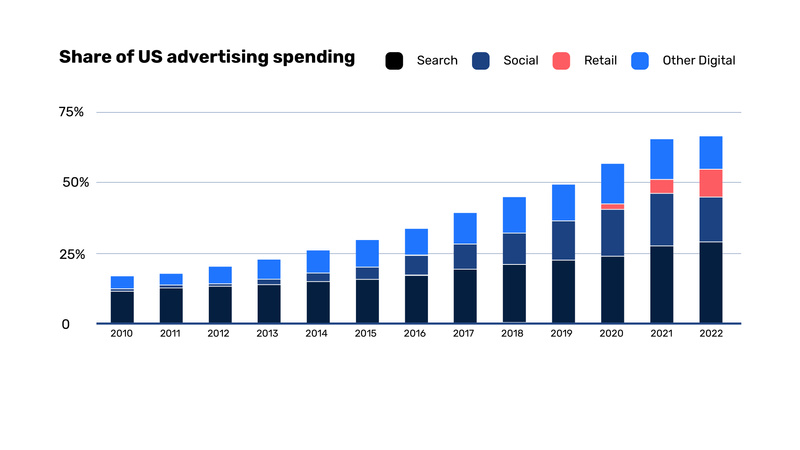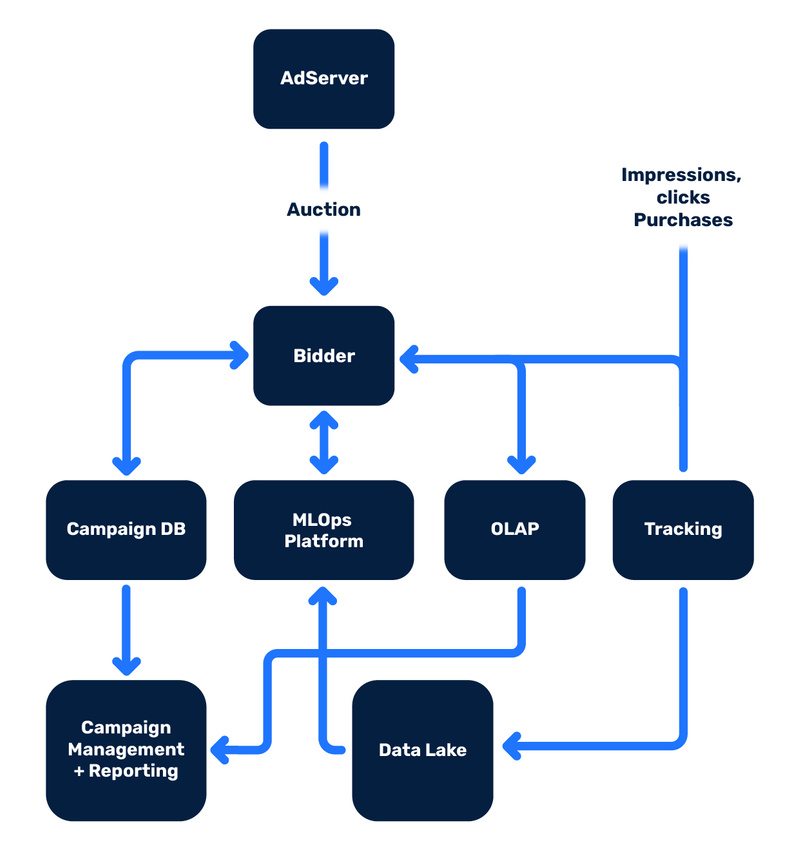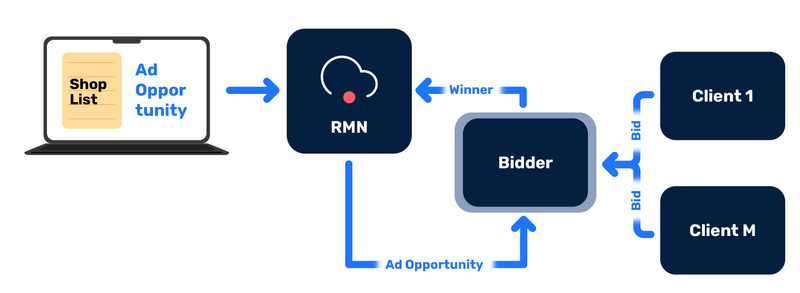Retail Media Networks (RMNs) are reshaping the landscape of digital advertising. Both retailers and advertisers are increasingly finding themselves using these platforms. We thought it was as good a time as any to dive into what RMNs are, what sets them apart, and the key components you should look out for when building one. After reading this post you’ll be able to answer the following questions regarding RMNs:
Retail Media Networks are advertising channels with high-quality first-party data on users’ purchasing habits. Online retail shops or e-commerce websites are prime examples of such networks. However, other channels may own this kind of data - for example, a delivery or hospitality app.

RMNs have extensive access to vast amounts of data and ad placement (such as display banners and sponsored listings). Leveraging technology is crucial to optimizing their use. Instead of adopting a cost-per-impression business model, RMNs can employ dynamic pricing through online ad auctions and precise targeting tools- This approach enhances user experience within the RMN platform while maximizing the effectiveness of advertiser’s budgets.
Before we go any further. Why are we asking these questions? Retail Media Networks are witnessing a remarkable surge in popularity. In fact, in 2022, Retail Media accounted for a significant 10% share of advertising expenditure in the United States alone, and this trend shows no signs of slowing down. The growth when compared to the rest of the previous years is astounding (see graph below). RMNs are becoming a crucial portion of advertising spending in the US and the rest of the world is following this trend with a slight delay.

Graph Source: https://www.ben-evans.com/presentations
Simply put, when executed effectively, Retail Media Networks can yield impressive profit margins. Ad platforms, when optimized, outperform infrastructure and retail sectors in terms of profitability. When Ads platforms work, they have much higher margins than infrastructure and retail:

Graph Source: https://www.ben-evans.com/presentations
Additionally, macroeconomic trends show that emerging markets are following in the same direction with a strong impulse in digital adoption, strong human capital development in tech roles, and tech capital inflow.
In an advertising ecosystem where data storage and sharing face stricter regulations and cookies are fading away, RMNs emerge as exceptional assets and set themselves apart from other platforms with owned and anonymized databases. Within an RMN, advertisers can accurately analyze their ad campaign performance, leverage first-party data for sharper target audiences, gain valuable insights into audience response, and generally manage their ad spend in a data-driven way based on performance-based models that ensure measurable Return On Investment (ROI).
On a retail site, you’ll typically find two types of advertising: traditional display placements and sponsored content. Display ads are the familiar banners that can be found in various locations throughout the site, such as at the top, bottom, or alongside search listings. Sponsored content refers to paid search results that appear in relevant areas. Additionally, you may also encounter media-rich formats like videos as well as interstitials (fullscreen ads that appear, for example, when clicking a link).

Retailers wishing to sell ads on their platform should consider building the following components:
In order to deliver relevant ads that compete for placement in a given context, retailers should develop an ad server. This ad server evaluates a set of eligibility criteria and generates a list of ads that meet the filters, such as audience targeting and geographical relevance.
For sponsored content, this ad server should align with the site’s search engine, ensuring agreement on the best ads to display at any given moment.
Given a context and a set of eligible ads, the platform should be able to determine which one is the best to show. This decision should balance ad revenue and the platform’s Gross Merchandise Value (GMV): too many ads may discourage users from the site, hurting the platform’s original core business. Some relevant points in this regard:

Advertisers should be able to target specific audiences and show them their ads with a given maximum frequency. Ideally, they should also have access to comprehensive campaign data, such as impressions, clicks, and purchases, to analyze performance and gain valuable insights.
Advertisers typically allocate a budget for a broad period of time - a week or a month. However, evenly distributing the budget over time may not be efficient. It can result in unused funds during low-traffic periods and insufficient funds to bid on high-opportunity timeslots. To optimize budget allocation, RMNs should provide algorithms that dynamically redistribute allocated budget to the best performing time periods, and between different ads/items within a campaign.
The mentioned components rely on technical capabilities that should be present in a developed RMN, including but not limited to:

A Feature Store
This capability encompasses a set of models to represent the systems’ entities (e.g., users, products) as numerical vectors. Not only the ability to design and calculate these are needed, but also the ability to readily and quickly read them - for example in the context of an online auction.
Experimentation Layer
Being able to run A/B or interleaving tests, analyze counterfactuals, and prepare experiments is critical while running an ads campaign, and an RMN should allow its advertisers to frame their decision-making process in a statistically sound environment.
Observability Platform
An observability platform essentially includes Monitoring, Alarms, Log centralization, and root cause analysis. Besides the BI analytics managers may perform, it is essential to have continuous automatic metrics monitoring in place to ensure the integrity/effectiveness/health of campaigns. Models can behave inaccurately if left uncontrolled due to factors like data drifting, sudden shifts in demand or competition, and more. It is crucial to continually monitor and programmatically respond to abnormal behavior.
Don’t forget, RMNs are ad channels, as such they have two sets of main stakeholders: Advertisers and Retailers. Let’s break down what each side aims to gain using Retail Media Networks and what variables they should be looking out for to do so:
When retailers establish an RMN their primary objective is to generate ad revenue. However, it is equally crucial for them to maintain advertising as a non-intrusive component of their site. Failing to do so can lead to a decline in their consumer base and, subsequently, a decrease in the data flow that initially supported building the RMN. So, retailers should keep an eye on:
Advertisers have diverse objectives. That said, a platform should enable them to track campaign success indicators and utilize rich data to iterate their strategies. When designing an RMN, it’s important to consider incorporating statistics on:
As your on-demand data team, Mutt Data can help you crystallize your data strategy through the design and implementation of technical capabilities and best practices. We study your company’s business goals to understand what has to change so we can help you accomplish it through a robust technical strategy with a clear roadmap and set of milestones. Talk to one of our sales reps at hi@muttdata.ai or check out our sales booklet and blog.
We’re active on Clutch! Read our reviews here. Or check out our success stories: